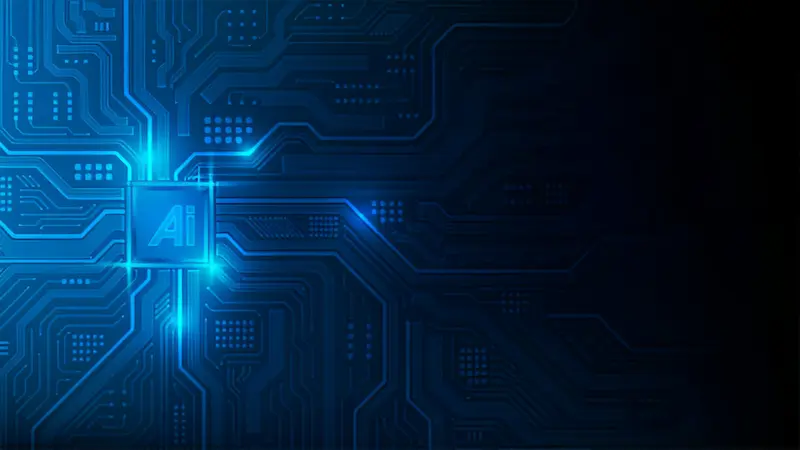Introduction
In a world fueled by innovation, the development of electrical innovation has been a foundation of human advancement. From its modest starting points to its groundbreaking present, and the astonishing possibilities representing things to come, electrical innovation keeps on significantly shaping our lives in significant ways. This article digs profound into the past, present, and eventual fate of electrical innovation, investigating its excursion and the ramifications it holds for society.
Beginnings of Electrical Innovation
Power, as far as we might be concerned today, follows its foundations back to old human advancements. Early trial and error with friction based electricity by the Greeks and the development of the main battery by Alessandro Volta laid the preparation for current electrical innovation. In any case, it was the spearheading work of Michael Faraday and his disclosure of electromagnetic enlistment in the nineteenth century that prepared for the functional use of power.
Early Advancements
During the nineteenth and mid twentieth hundreds of years, fast headways in electrical innovation altered businesses like telecom, transportation, and assembling. Thomas Edison’s advancement of the useful brilliant light and Nikola Tesla’s commitments to substituting flow (AC) power frameworks were critical in forming the cutting edge electrical scene.
Influence on Industrialization
The broad reception of power energized the Modern Insurgency, prompting expanded efficiency, urbanization, and financial development. Electric engines fueled sequential construction systems, while electric lighting changed urban communities and homes, introducing another time of accommodation and effectiveness.
The Current Scene of Electrical Innovation
In the 21st 100 years, electrical development continues to progress at an uncommon speed, driven by digitalization, harmless to the ecosystem power, and the Snare of Things (IoT). This portion examines the current status of electrical development and its various applications across various regions.
Advanced Transformation
The approach of advanced innovation has altered the manner in which we create, send, and consume power. Savvy networks, controlled by cutting edge sensors and examination, streamline energy dispersion, further developing unwavering quality and manageability. Additionally, digitalization has empowered the coordination of sustainable power sources, for example, sun based and wind, into the lattice, lessening fossil fuel byproducts and moderating environmental change.
Sustainable power Coordination
The change towards environmentally friendly power is reshaping the energy scene, with sunlight based and wind power turning out to be progressively savvy and available. Advancements in energy capacity, like lithium-particle batteries, are defeating the discontinuous idea of sustainable sources, empowering their consistent coordination into the matrix.
IoT and Robotization
The expansion of associated gadgets and IoT advances is changing the way in which we connect with electrical frameworks. From brilliant homes furnished with energy-proficient machines to modern offices advanced for robotization, IoT-empowered gadgets are upgrading energy effectiveness, efficiency, and security.
Brilliant Urban areas
The idea of brilliant urban areas, fueled by interconnected sensors and information examination, holds the commitment of additional maintainable and reasonable metropolitan conditions. Shrewd matrices, keen transportation frameworks, and effective public administrations are driving metropolitan development, working on personal satisfaction for occupants.
Future Possibilities and Advancements
As we look forward, the fate of electrical innovation holds gigantic commitment, driven by arising patterns like zap, man-made consciousness (artificial intelligence), and quantum figuring. This part investigates the expected forward leaps and difficulties forming the following outskirts of electrical advancement.
Charge of Transportation
The charge of transportation, especially the broad reception of electric vehicles (EVs), is ready to change the auto business. With headways in battery innovation and charging foundation, EVs offer a manageable option in contrast to conventional petroleum derivative vehicles, lessening ozone harming substance discharges and reliance on limited assets.
Independent Vehicles
The combination of electrical innovation with computer based intelligence is making ready for independent vehicles, proclaiming another period of portability. Self-driving vehicles, fueled by complex sensors and calculations, guarantee more secure, more effective transportation frameworks, while decreasing gridlock and mishaps.
Computer based intelligence and Energy The executives
Artificial intelligence fueled energy the board frameworks are altering the way that we improve energy utilization and network activities. AI calculations examine tremendous measures of information to estimate interest, advance age, and improve network versatility, empowering more proficient and dependable energy conveyance.
Quantum Figuring
The appearance of quantum registering holds groundbreaking ramifications for electrical innovation, with the possibility to upset processing, cryptography, and materials science. Quantum PCs, equipped for handling immense measures of information at exceptional paces, could open additional opportunities in energy capacity, materials plan, and reproduction.
Master Exchange Abilities: Your Entryway to Electrical Innovation
Master Exchange Abilities is a main professional instructional hub situated in Cheshunt, Hertfordshire, spend significant time in electrical courses. They offer complete preparation programs for people keen on seeking after a lifelong in the electrical business, taking special care of the two novices and experienced experts.
Here’s the reason picking Master Exchange Abilities is beneficial:
Quality Preparation: Master Exchange Abilities gives top notch preparing that furnishes understudies with useful abilities and hypothetical information fundamental for progress in the electrical exchange.
Experienced Coaches: Their group comprises of profoundly experienced guides who are devoted to giving customized consideration and backing to each understudy.
Adaptable Learning Choices: Whether you favor parttime or full-time preparing, Acquire Exchange Abilities offers adaptable mastering choices to oblige different timetables and learning inclinations.
Little Class Sizes: With little class sizes, understudies benefit from more individualized guidance and a helpful learning climate.
Active Experience: The instructional hub’s cutting edge office is furnished with present day apparatuses and gear, permitting understudies to acquire important involved insight in reenacted certifiable situations.
Vocation Backing: Past preparation, Acquire Exchange Abilities offers progressing profession backing and direction to assist understudies with getting business open doors inside the electrical business.
In rundown, Master Exchange Abilities stands apart for its obligation to giving top notch preparing, experienced guides, adaptable learning choices, pragmatic experience, and vocation support, settling on it a fantastic decision for people hoping to seek after a fruitful profession in the electrical exchange. Look at now how to turn into an electrical expert?
FAQs (Frequently Asked Questions)
1. What are the key milestones in the evolution of electrical technology?
- From the discovery of electricity by ancient civilizations to the inventions of pioneers like Faraday, Edison, and Tesla, key milestones include the development of the telegraph, electric light bulb, and alternating current (AC) power systems.
2. How is renewable energy shaping the future of electrical technology?
- Renewable energy sources such as solar and wind power are becoming increasingly cost-effective and are being integrated into smart grids, reducing carbon emissions and enhancing energy sustainability.
3. What role does artificial intelligence play in electrical technology?
- AI-powered systems are optimizing energy management, grid operations, and transportation systems, improving efficiency, reliability, and safety.
4. What are the challenges in transitioning to electric vehicles?
- Challenges include the need for infrastructure development, such as charging stations, as well as addressing range anxiety and ensuring the sustainability of battery production and disposal.
5. How will quantum computing impact electrical technology?
- Quantum computing has the potential to revolutionize computing, cryptography, and materials science, unlocking new possibilities in energy storage, materials design, and simulation.
6. What are the implications of smart cities for electrical technology?
- Smart cities leverage IoT technologies to optimize energy consumption, enhance urban mobility, and improve public services, leading to more sustainable and livable urban environments.
Conclusion
The evolution of electrical technology has been a remarkable journey, from its humble beginnings to its transformative present and the exciting prospects of the future. As we stand on the brink of a new era of innovation, driven by renewable energy, AI, and quantum computing, the possibilities are endless. By embracing these advancements and addressing the challenges ahead, we can pave the way for a brighter, more sustainable future powered by electricity.







